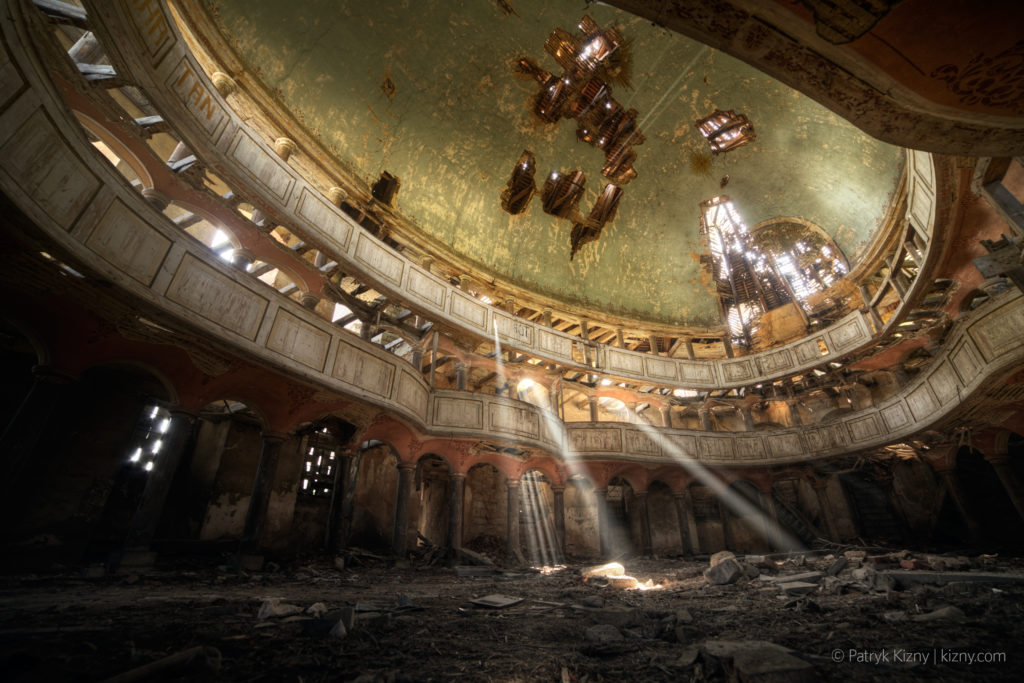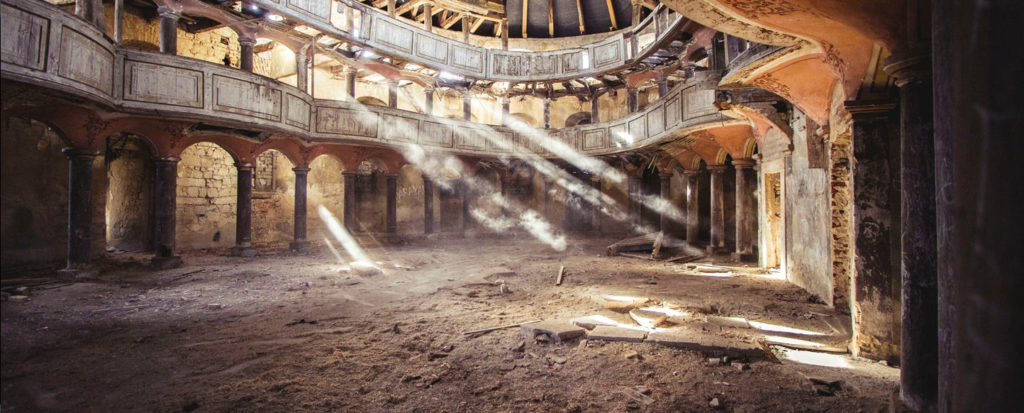All views expressed in the texts on the blog are the personal thoughts of the authors and are not synonymous with the position of the Foundation.
The Pearl, a beautiful building from the end of the eighteenth century, located in the village of Żeliszów near Bolesławiec. It delights with its plan, light, structure and specific climate of abandonment. Is this also your heritage?
During the construction of the Pearl, the village was called Giersdorf, and the inhabitants spoke German mostly. The Pearl itself served as a meeting place for Lutherans. German inscriptions preserved to this day leave no illusions about the nationality and religion of the original users of the jewel of the Bolesławiec poviat, attributed to Carl Langhans.
Everything about what I wrote in the previous paragraph results that during my work for the Foundation I often meet with strongly negative answers to the question asked in the title. What do opponents of the universality of cultural heritage say? It’s not catholic, so it’s not theirs. It’s not Polish, so it’s not theirs. They come from a country that is neither Poland nor Germany, so it’s not theirs. They come from Germany, but they are atheists or followers of other than lutheranian thought current, so it’s not theirs. These are the most common arguments, often enriched by the surprise that the Polish foundation deals with ‘not its’ heritage.

Slightly less often, however also in opposition to the universalism of cultural heritage I have mentioned, I come across opinions narrowing the belonging of cultural heritage, by phrases such as “it’s ours, because we or our ancestors lived here”, “it’s part of Lutheran culture.” It is difficult to argue with people who feel this kind of sentimental local patriotism when they stand next to the burial place of mothers, fathers and grandparents. But since the result of these thoughts also comes with a surprise why the foundation from Poland deals with “not its” heritage, I feel obliged to write a few words in response to this astonishment. Words that I believe are close to all people of culture.
If the Pearl is not our heritage, if it is not your heritage, is the Acropolis? And the Forum Romanum? Works by Seneca and Goethe, Plato and Kant, Shakespeare, Beckett, Chopin, Beethoven? The Beatles, the Rolling Stones and Elvis? Different languages, different nations, different thoughts, times, depth and issues.
For centuries we have fought and waged wars, battles and skirmishes. Every now and then a diplomatic tension syndrome happens to one or another country. But undeniably, our national, religious, class, language and thought cultures both constituted global culture and resulted from it. Rome, conquering Greece, ceased to be local Rome, and became a melting pot of Greek and Roman cultures, and later any culture that became part of the Roman Empire, whether as an ally, trade partner, or as an enemy or prey. Every previous and later empire or even state worked similarly. For centuries, we exchanged thoughts, art and heart more and more globally. Is it possible today to say with a clear conscience about the culture of Japan or China without mentioning the impact of broadly understood European culture? Or vice versa?

We are heirs of our ancestors – biological and intellectual. Heirs of Socrates, Caesar, Charlemagne, the French Revolution and Nietzsche. Maria Curie and Albert Einstein. Philip Dick, Lem, Asimov, Orwell. Local patriotism is a wonderful thing, but it cannot overshadow the fact that our culture is a global culture, and all its manifestations – from the Great Pyramid, Valley of the Kings or Buddha statues, through the Forum Romanum, the Globe, Notre Dame Cathedral to the Moscow Kremlin and Empire State Building of New York are our common heritage. Your heritage. Just like the Pearl.
Wilk Korwin-Szymanowski
